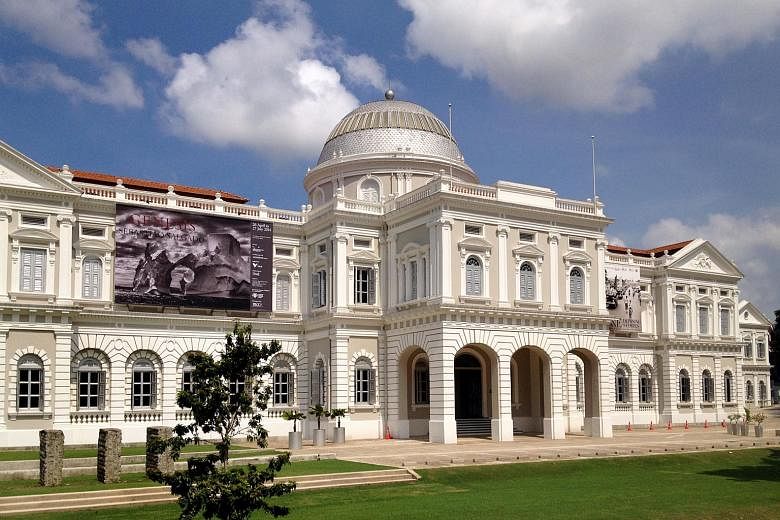SINGAPORE - After a $10 million facelift that began last year, the National Museum of Singapore opens its six new permanent galleries this weekend.
The revamp coincides with the Republic's 50th anniversary celebrations and is also a much-needed overhaul in form and substance, given that the galleries were last done up nearly 10 years ago.
The aim is to give museum-goers a livelier and more comprehensive overview of the country's history and to celebrate multiple voices.
There is a lot to see. Here are some highlights:
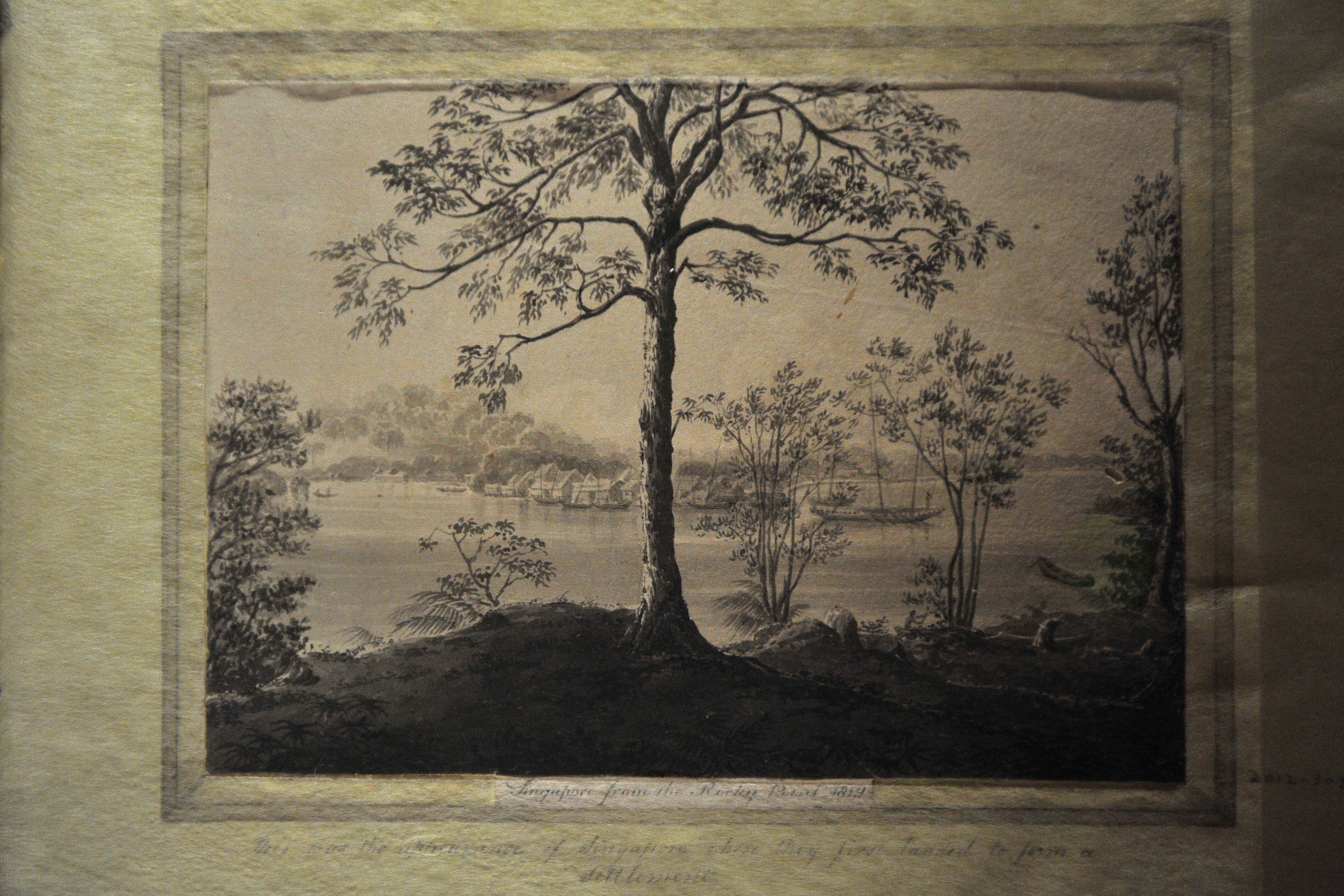
1. Singapore From The Rocky Point, 1819
by John Michael Houghton
Grisaille on paper
Collected in the album Views Of The China Seas And Macao taken during Capt. D. Ross' Surveys by M. Houghton
National Museum of Singapore collection
Houghton was a midshipman on the survey ship, HMS Discovery. It was commanded by hydrographer Captain Daniel Ross, who successfully assisted Sir Stamford Raffles in the search for a new trading port near the entrance to the Strait of Malacca in 1819.
An inscription below Houghton's drawing reads, "This was the appearance of Singapore when they first landed to form a settlement". This painting is thus possibly the earliest surviving view of Singapore and an eyewitness pictorial account of Raffles's initial landing on the island on Jan 28, 1819.

2. Revere Bell (1843)
Bronze
National Museum of Singapore collection
This bell was cast in the Revere foundry in Boston in the tradition of the American patriot, Paul Revere. His daughter Maria was married to Joseph Balestier, the first American consul in Singapore (1837-1852). Maria Revere Balestier presented the bell to the Church of St Andrew (the predecessor of St Andrew's Cathedral). She had one condition - that the church sound the curfew every night at 8pm to remind sailors in the town to return to their ships and to alert residents to be watchful of robberies and assaults after dark.

3. Mahjong set, 1920s
Singapore
Bamboo, ivory, metal and wood
Gift of Mr Keng Ah Wong
A game of strategy played by four people, this mahjong set contains 144 tiles each carved from ivory with a bamboo base, a set of miniature dice and three "direction" indicators. Mahjong was the second most popular game played by women here in 1920s and 1930s, after the card game bridge, and mahjong tea parties were often organised at various clubs for entertainment and fundraising. In 1940, the Chinese Ladies Association raised $300 for the Patriotic Fund through a mahjong and bridge drive.
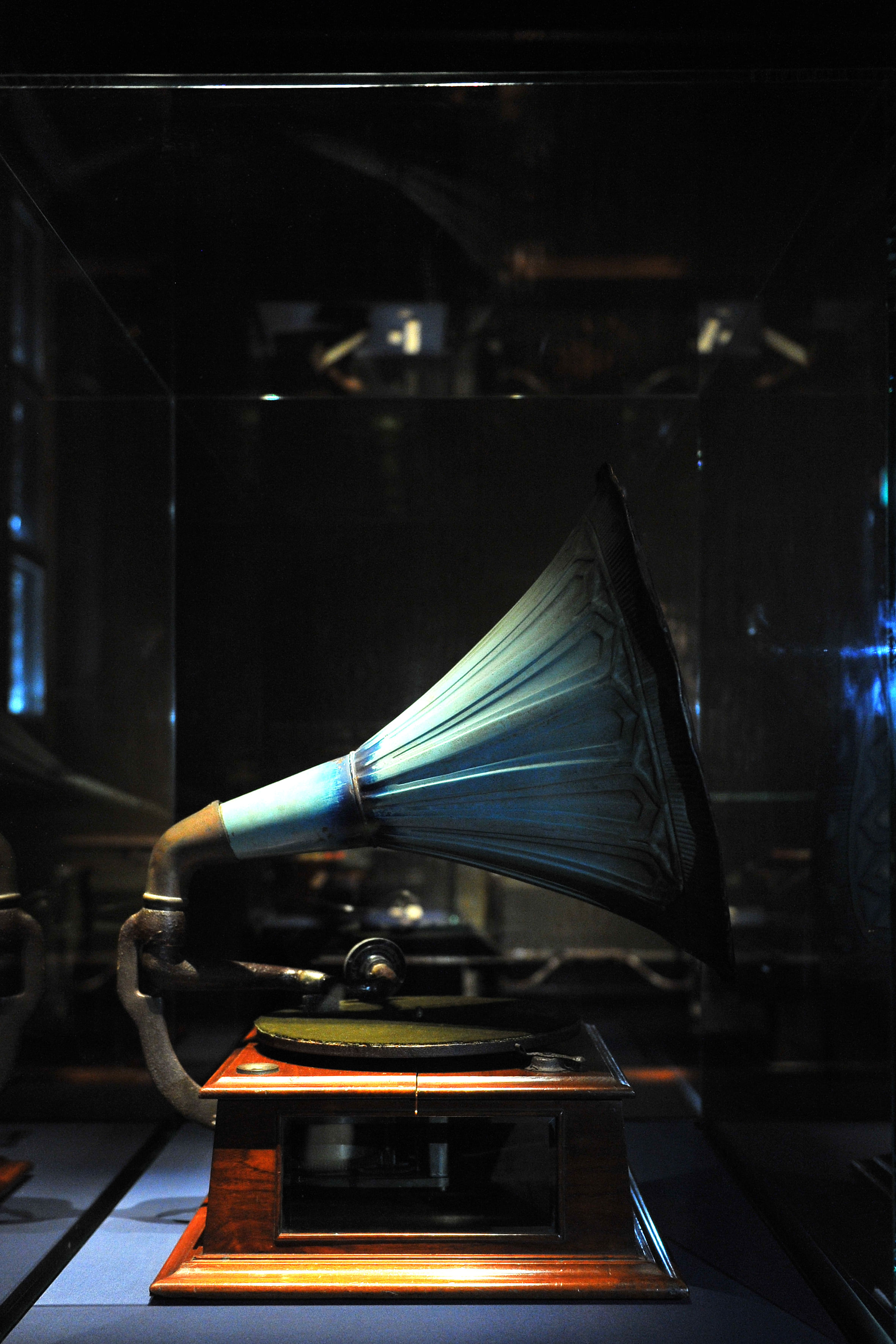
4. Gramophone, 1910
Singapore
Wood, brass, glass, felt
Asian Civilisations Museum collection
Designed to take centrestage in the reception hall or living room of a home, a gramophone incorporates a clockwork motor beneath the turntable in a wooden box, and is wound up with a crank handle. Its distinctive flower-shaped horn is known as the "Morning Glory" and was influenced by the Art Nouveau movement. Gramophones made their way into the clubs and homes of affluent Asians who were keen on Western music and big bands of the Jazz Age in the early 20th century.
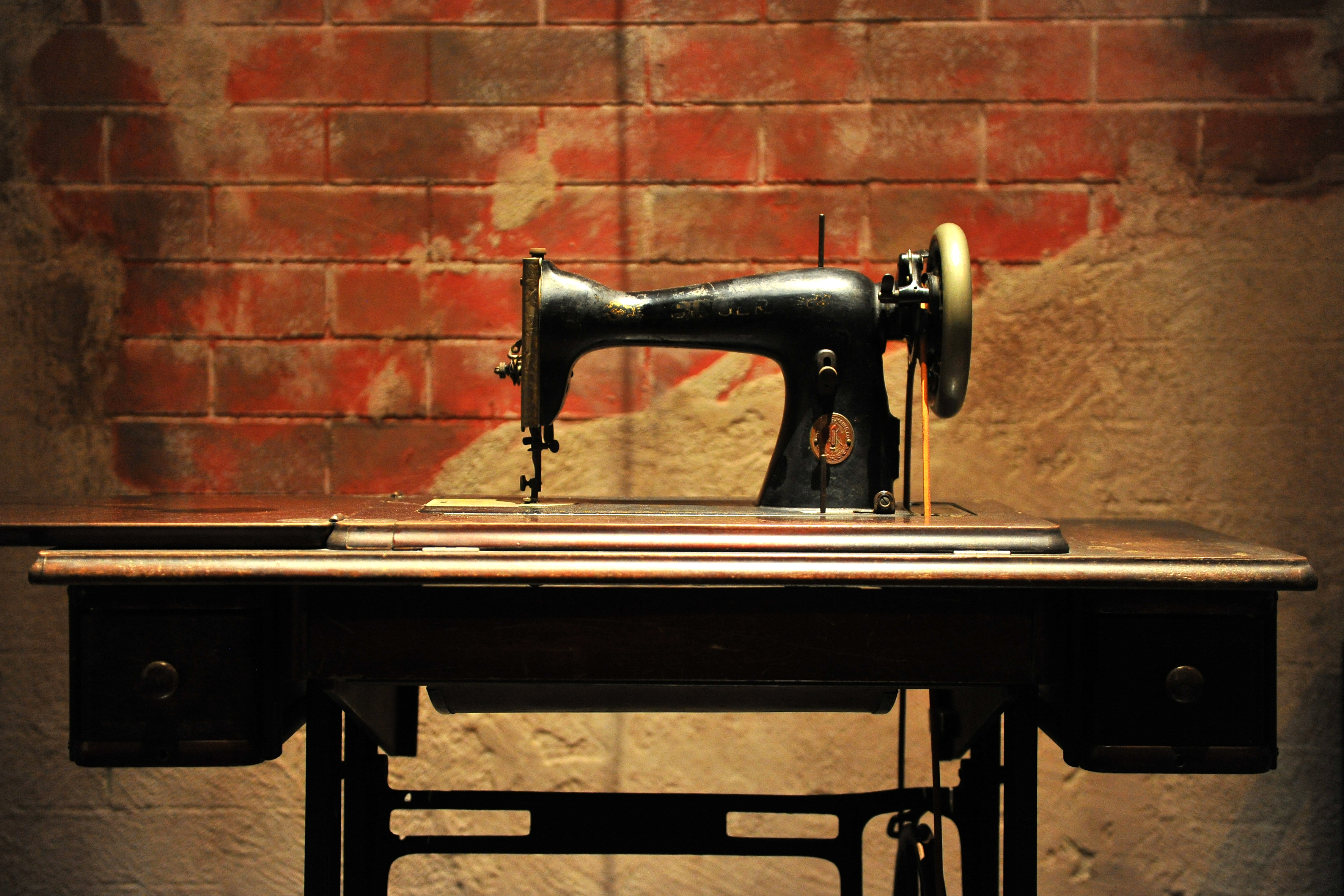
5. Sewing Machine, 1940s
Singapore
Wood, metal
Donated by Elizabeth Mahadevan
Severe shortages of basic necessities during the Japanese Occupation compelled people to reuse materials from old clothes, curtains and bed sheets to make new garments, and mend worn ones. Sewing machines were indispensable in many households for this purpose. This sewing machine was a gift from Joseph Linus to his wife Grace, both from Kerala, south-west India. During the war they nearly lost it to a looter, but Linus managed to retrieve the machine by producing its serial number (EC749402) as proof of ownership.

6. Kok Wah and Yeok Ying's wedding rings, 1942
Singapore
Gold
On loan from Mr and Mrs Lai Kok Wah
The couple, who are now in their 90s, have recorded their experience of getting married during the difficult war years. This pair of gold rings was custom-made for the wedding. The ring on the right belongs to Yeok Ying and bears Kok Wah's name, while the one on the left, which is Kok Wah's, is engraved with Yeok Ying's name. They paid Weng Cheong Goldsmith, which is still in business at South Bridge Road today, about 60 Straits dollars for the rings as well as the cost of engraving.
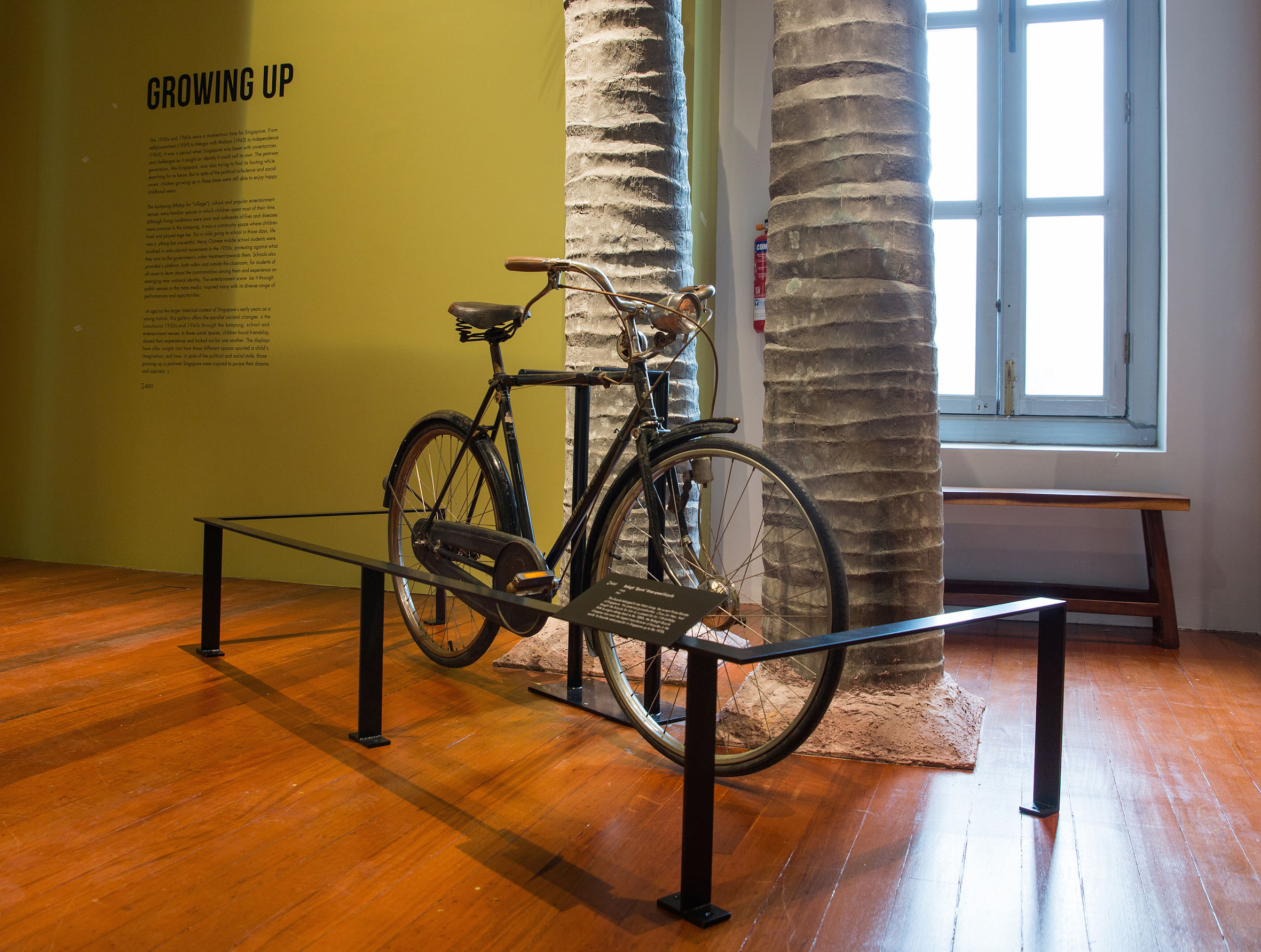
7. Raleigh "Sports" three-speed bicycle, 1963
Singapore
Steel
This bicycle belonged to Prime Minister Lee Hsien Loong. His paternal grandmother, Chua Jim Neo, had bought the bicycle for him as a present for his 11th birthday. With its origins dating back to the 1880s, the Raleigh Bicycle Company was once the largest manufacturer of bicycles in the world. Its bicycles were popular in Singapore up to the 1970s.
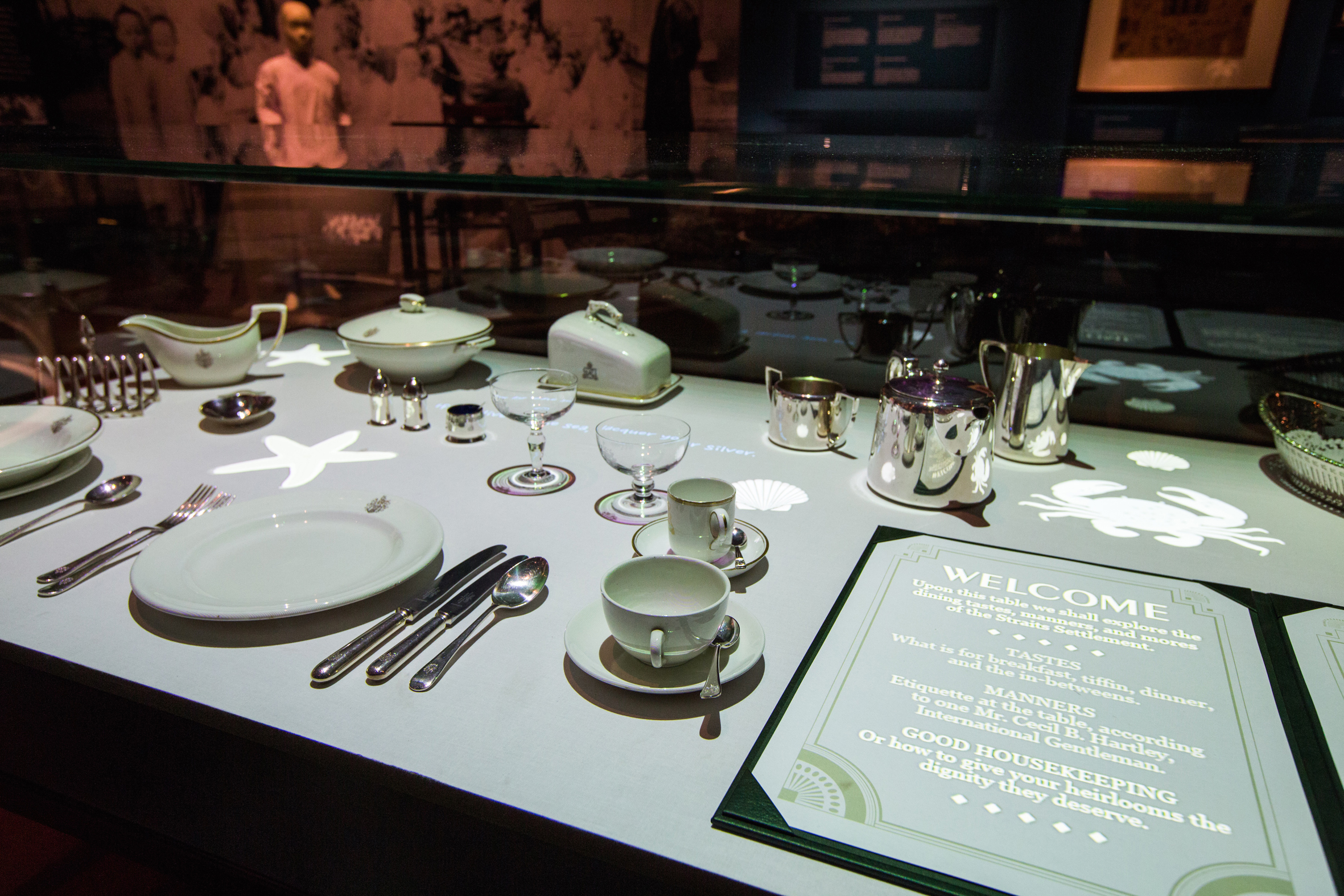
8. Tableware from Government House
Silver, ceramics
1940s to 1950s
Sheffield, England
National Museum of Singapore collection
This set of tableware comes from the Government House (the Istana today) collection. Each item bears the royal cypher of the names of Britain's reigning monarchs, as well as the Coat of Arms of the Colony of Singapore (1948-1959). The royal cyphers of King George VI (GRI) and Elizabeth Royal II each comprised the monarch's initials and titles; GRI, for example, stands for Georgius Rex Imperator - George King and Emperor.
Similar tableware could be purchased from John Little & Co. and Robinsons & Co. at the time. Accompanying the display is a feature showcasing the culinary tastes, manners and housekeeping tips related to silver and glassware of the Straits Settlements. This display shines a spotlight on life in Singapore in the 1940s and 1950s.
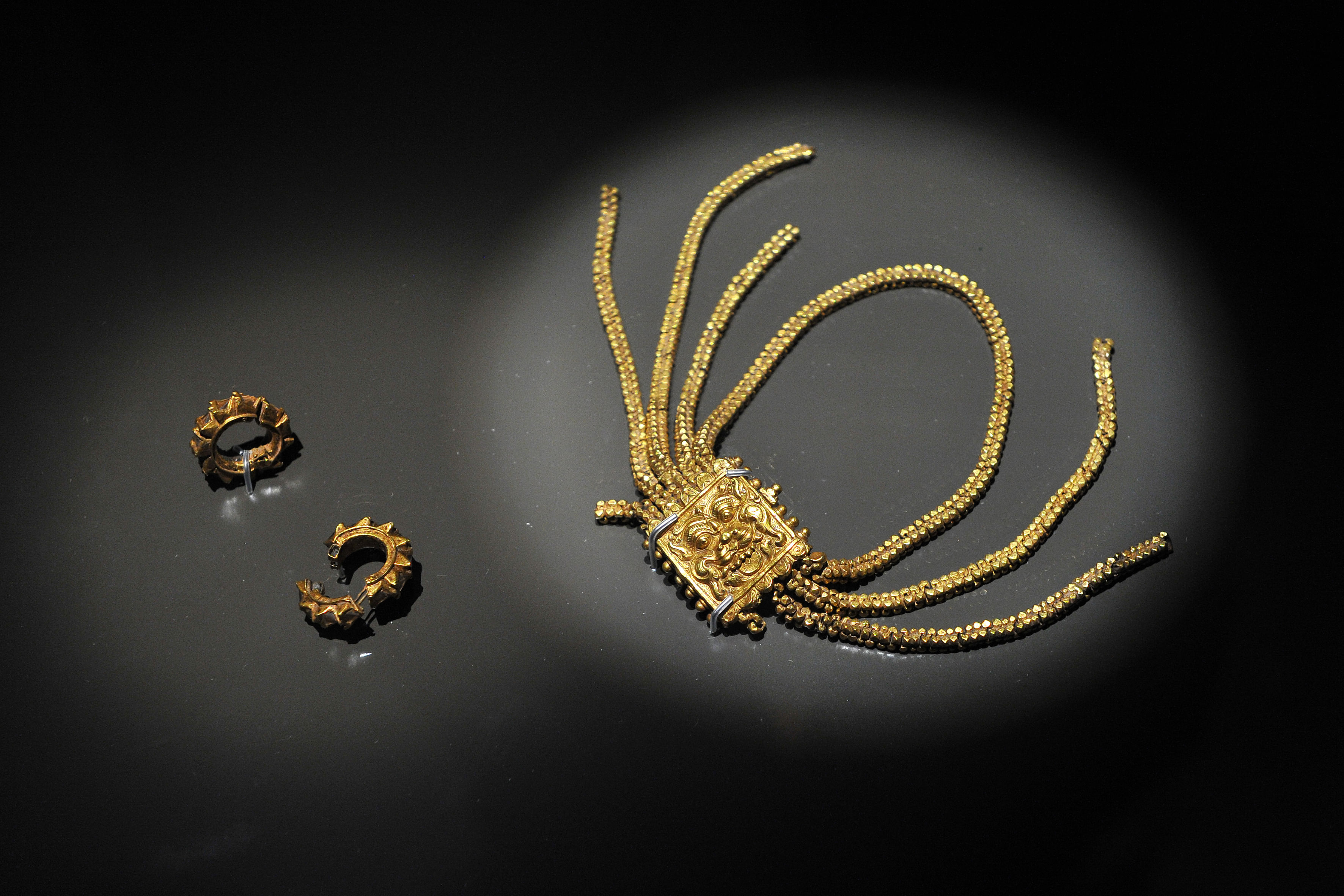
9. Gold earrings and armlet, 14th century
Fort Canning Hill (Bukit Larangan)
National Museum of Singapore collection
These objects were discovered in 1928. Each of the earrings has a socket joint and wire hinge. The armlet bears a plaque of repoussé work depicting the Javanese kala and shows the various cultural influences of the time. The kala motif is a protective symbol found at the entrance of Javanese temples dating from the 8th to 14th centuries. The armlet also has flexible chains, some of which were already broken when it was discovered. A statue from West Sumatra made in the mid-14th century shows a king wearing the same kind of jewellery at his waist.

10. Portrait of Sir Shenton Whitelegge Thomas (1939)
by Xu Beihong
National Museum of Singapore collection
Sir Shenton Thomas was the Governor of the Straits Settlements and High Commissioner of the Federated Malay States from 1936 to 1946. He is associated with the battle for Malaya and the fall of Singapore to the Japanese during World War II. This portrait was painted by Xu Beihong, one of the best-known figure painters in pre-war China. His oil paintings combined compositional elements from traditional Chinese paintings with those of European realism.
Xu composed this portrait while on a visit to Singapore in July 1939. The Governor's stiff posture could be Xu's attempt to capture the political tension before the outbreak of the Pacific War.
